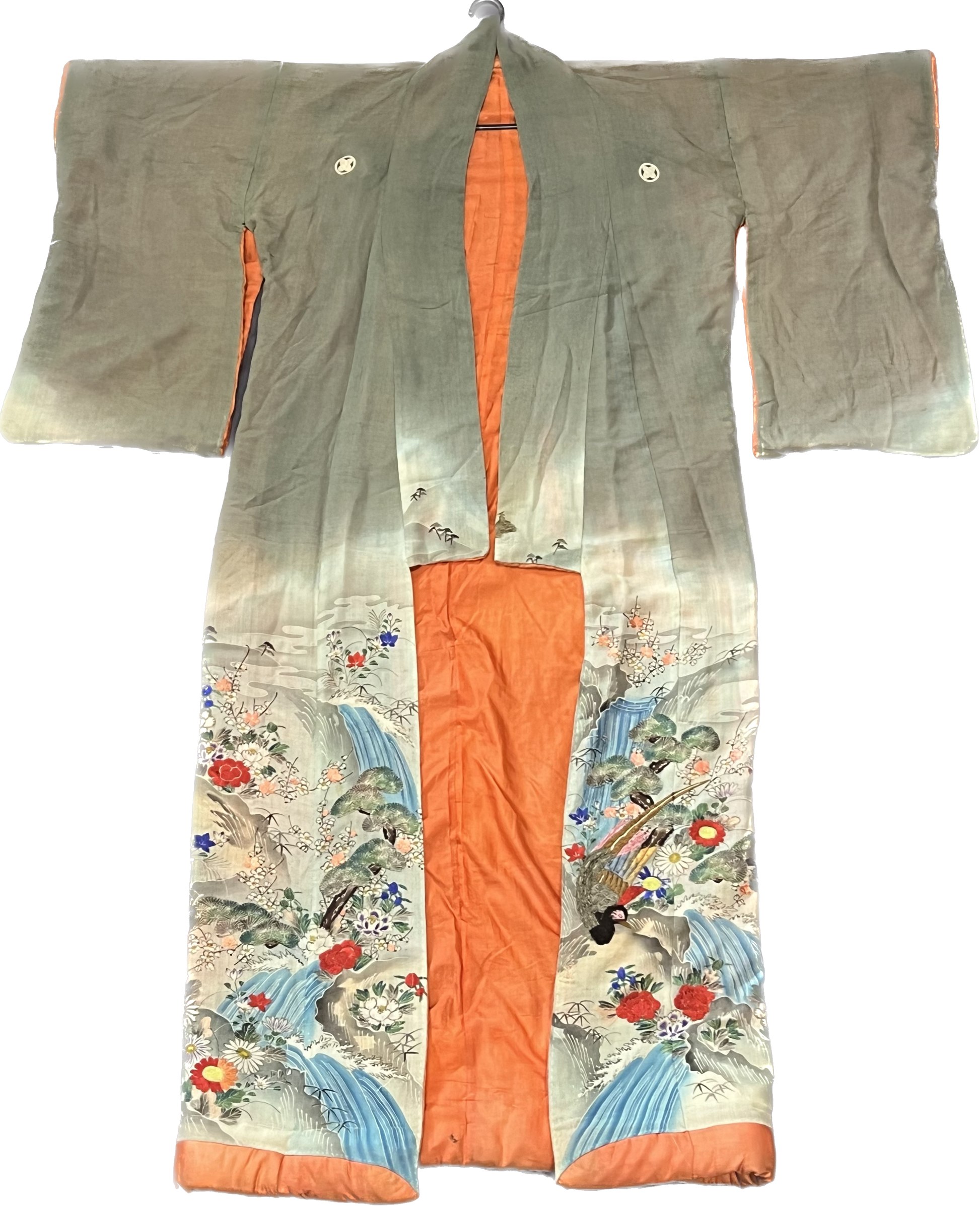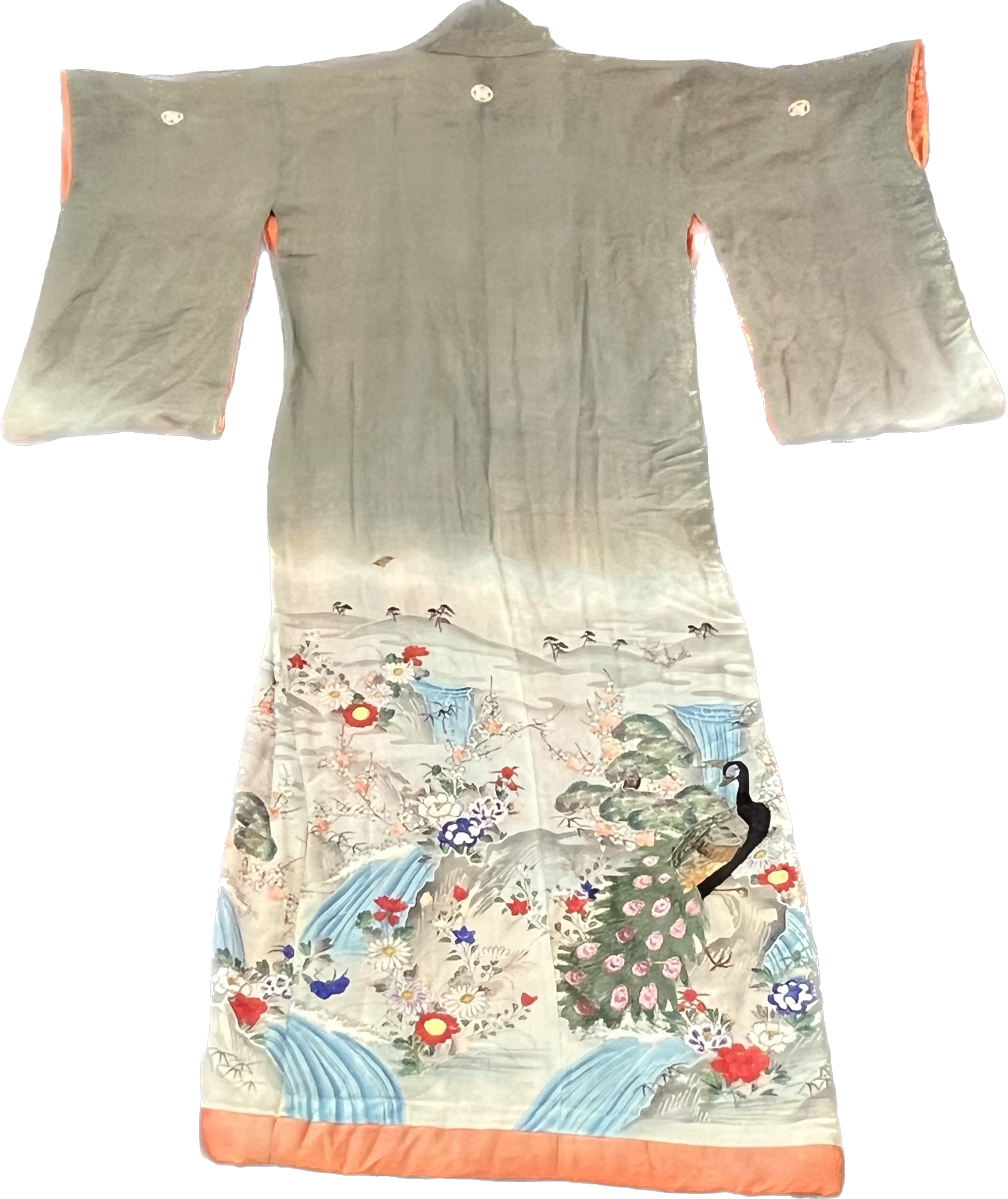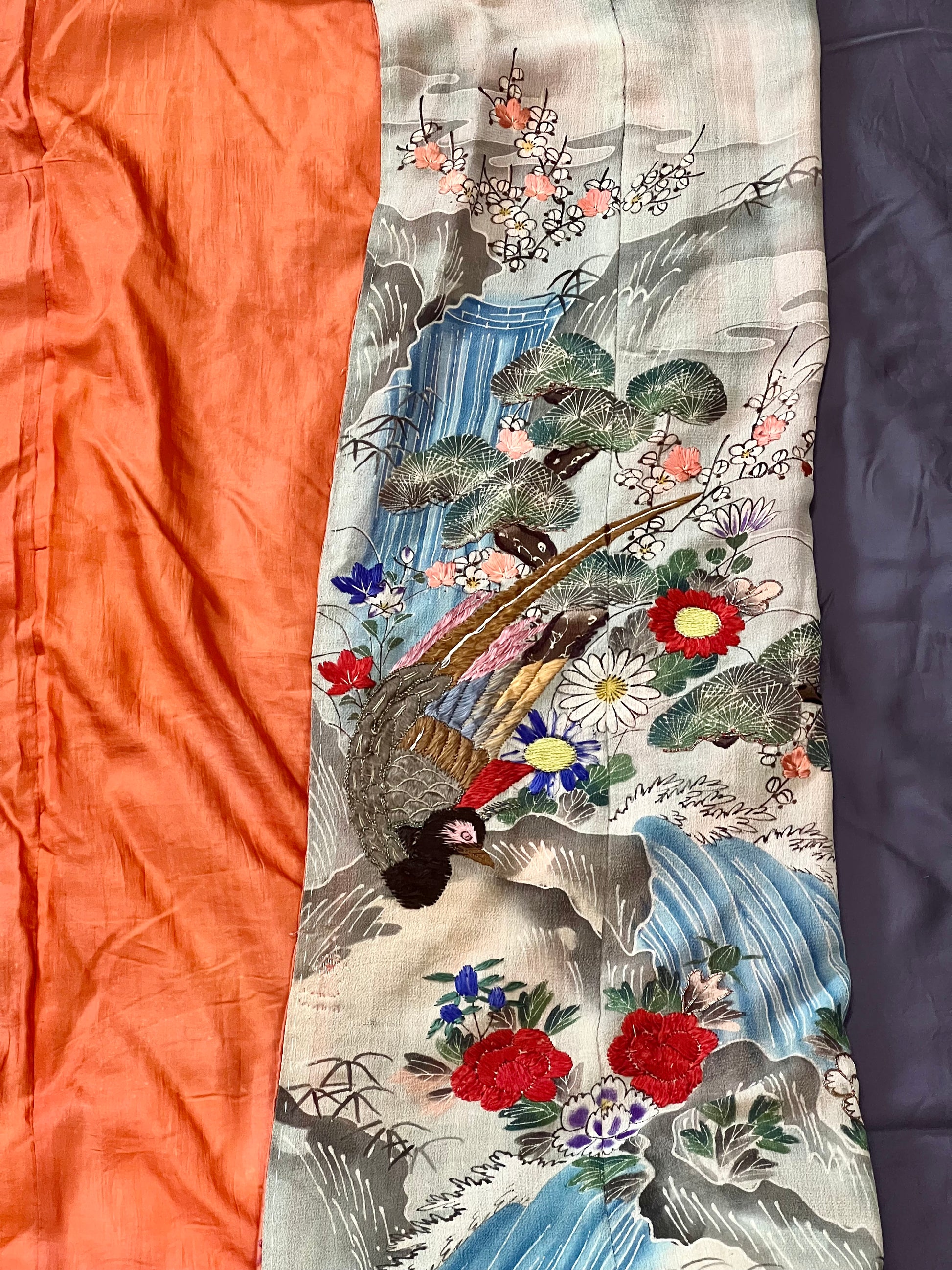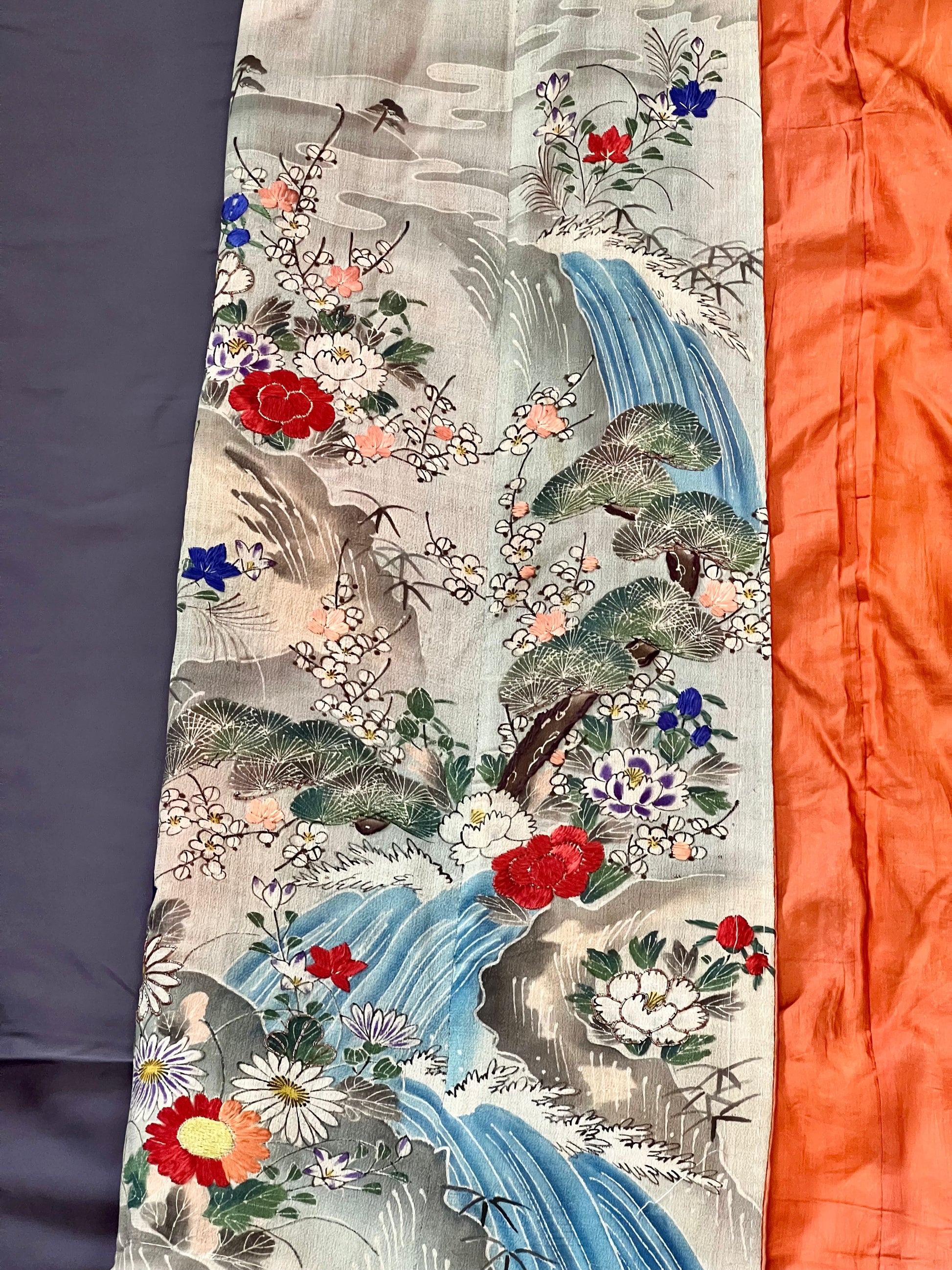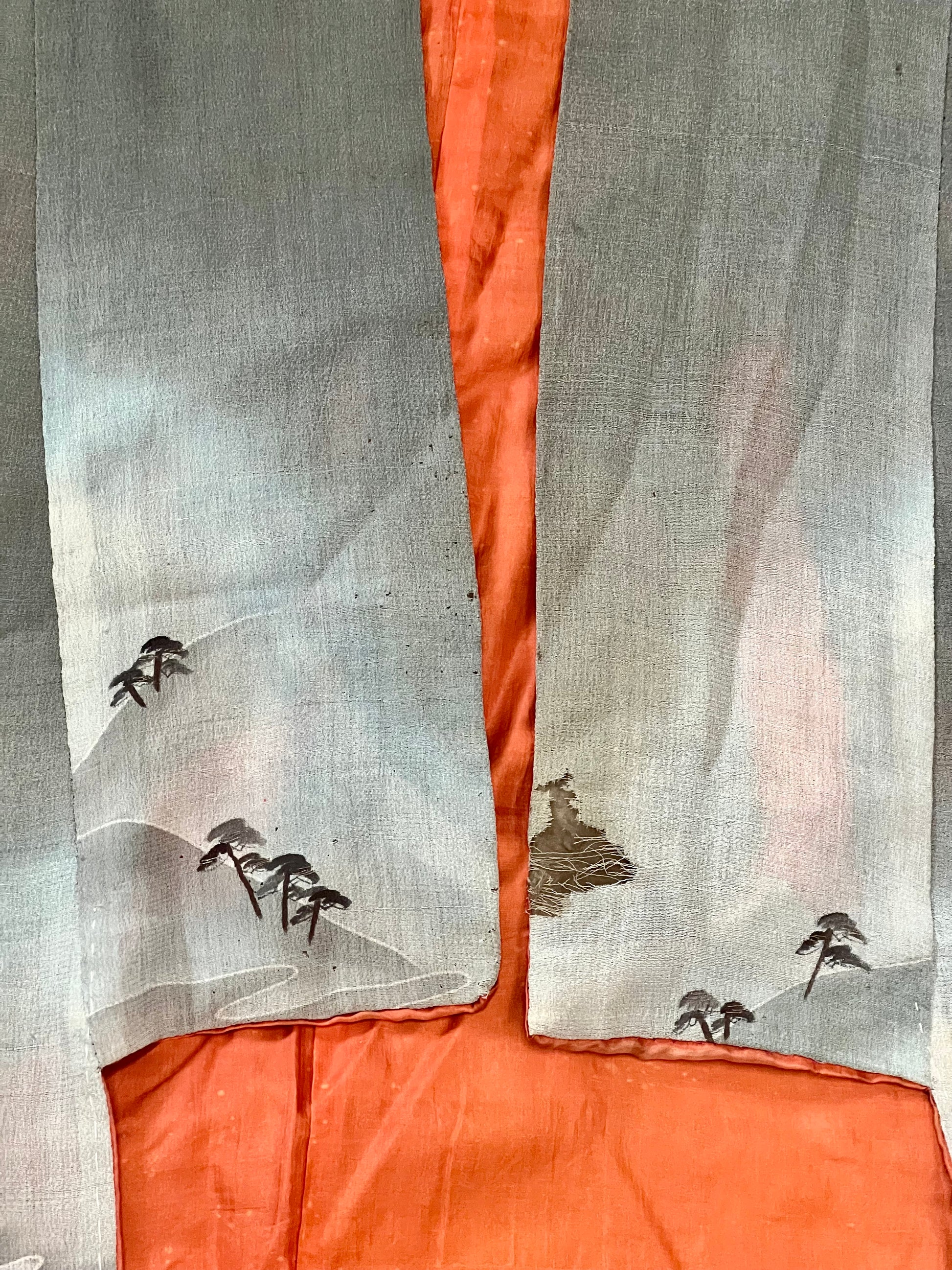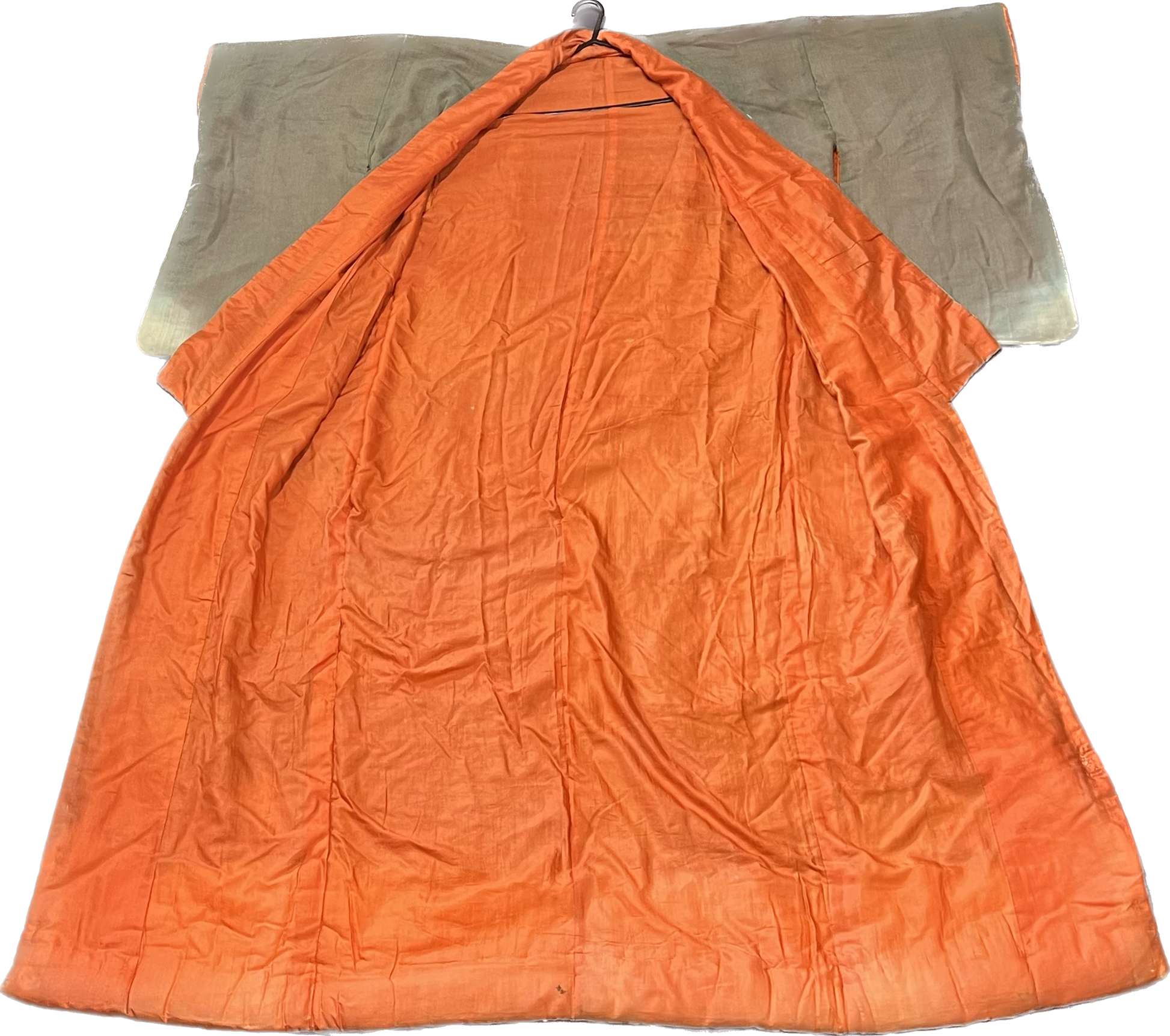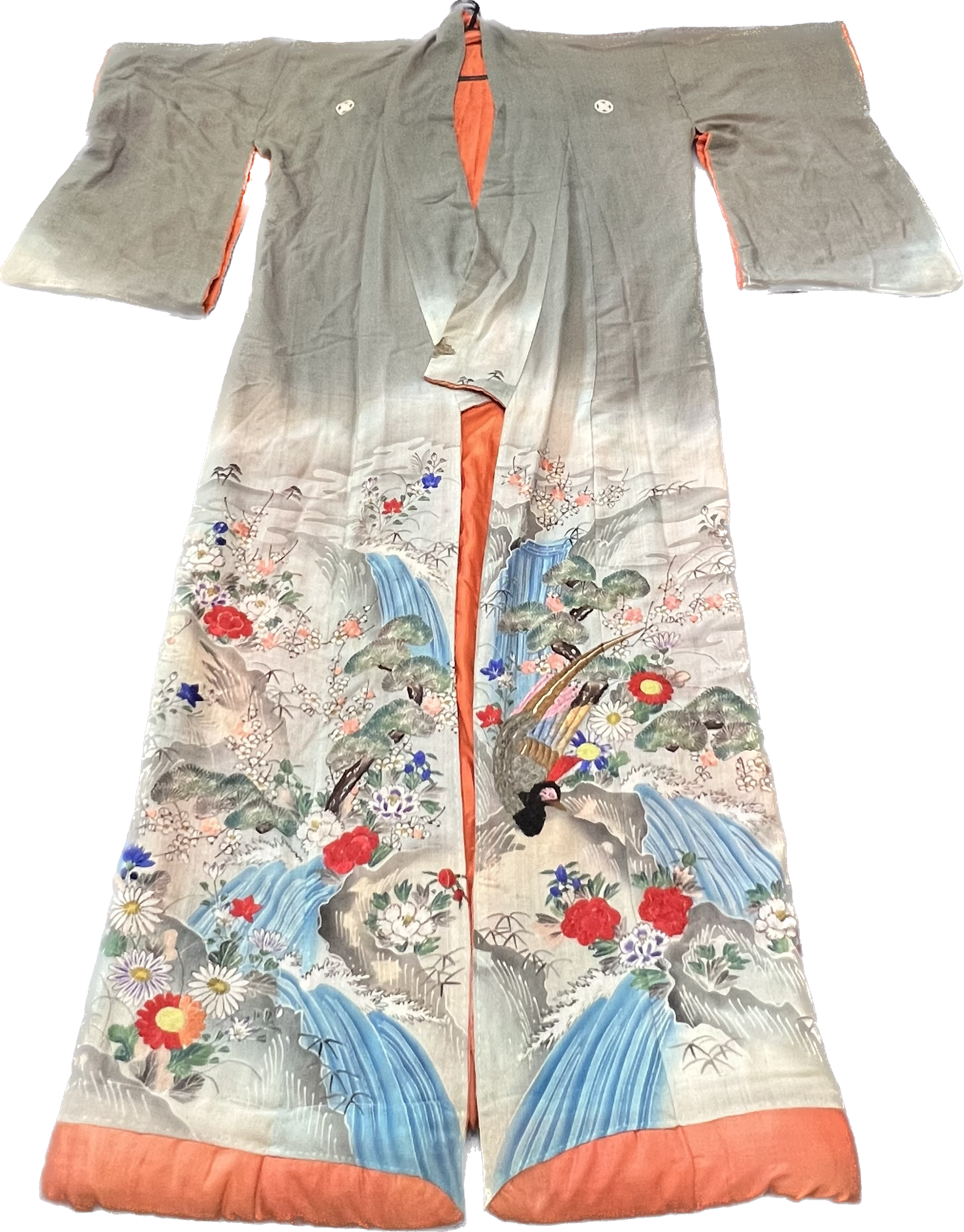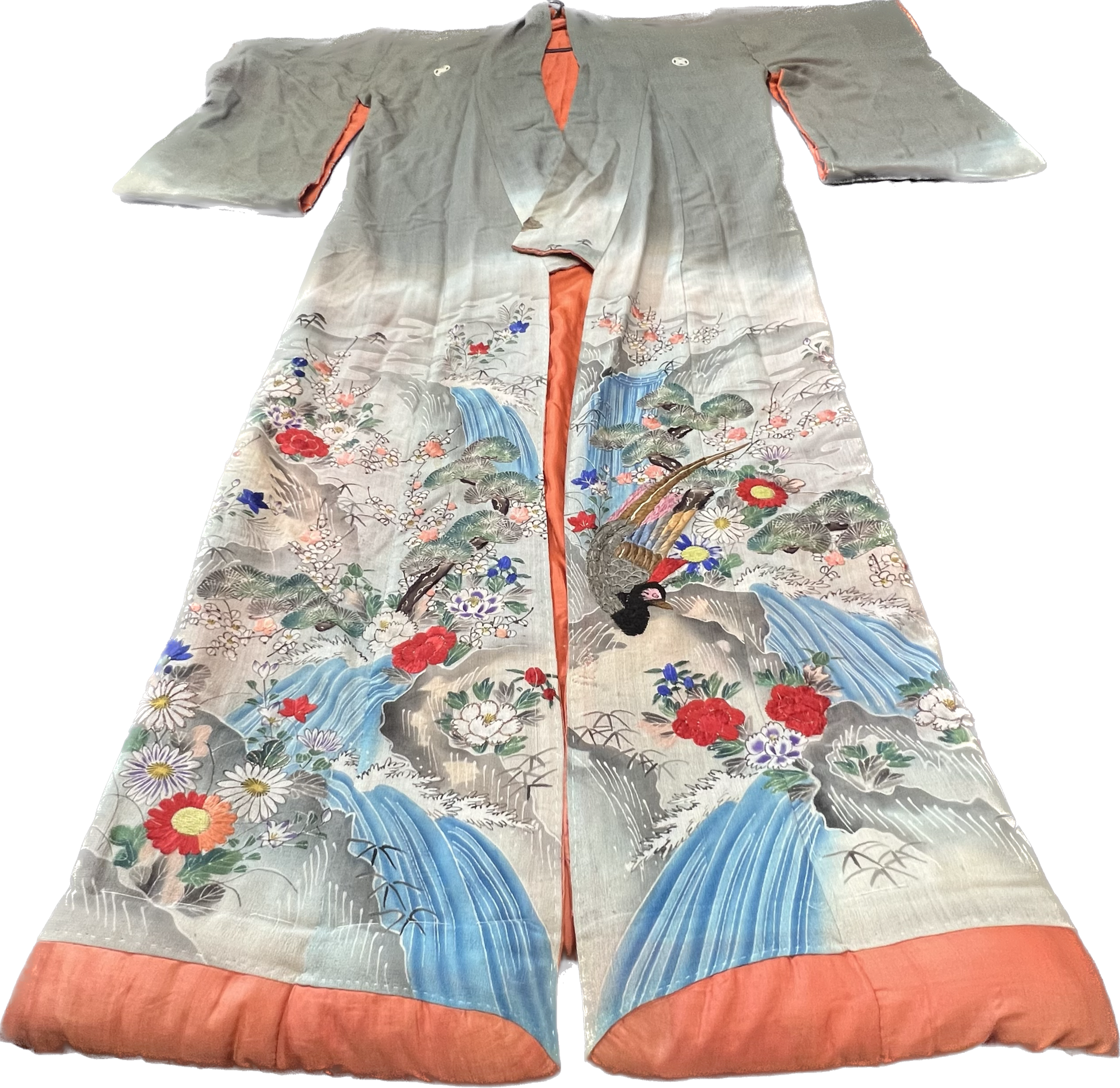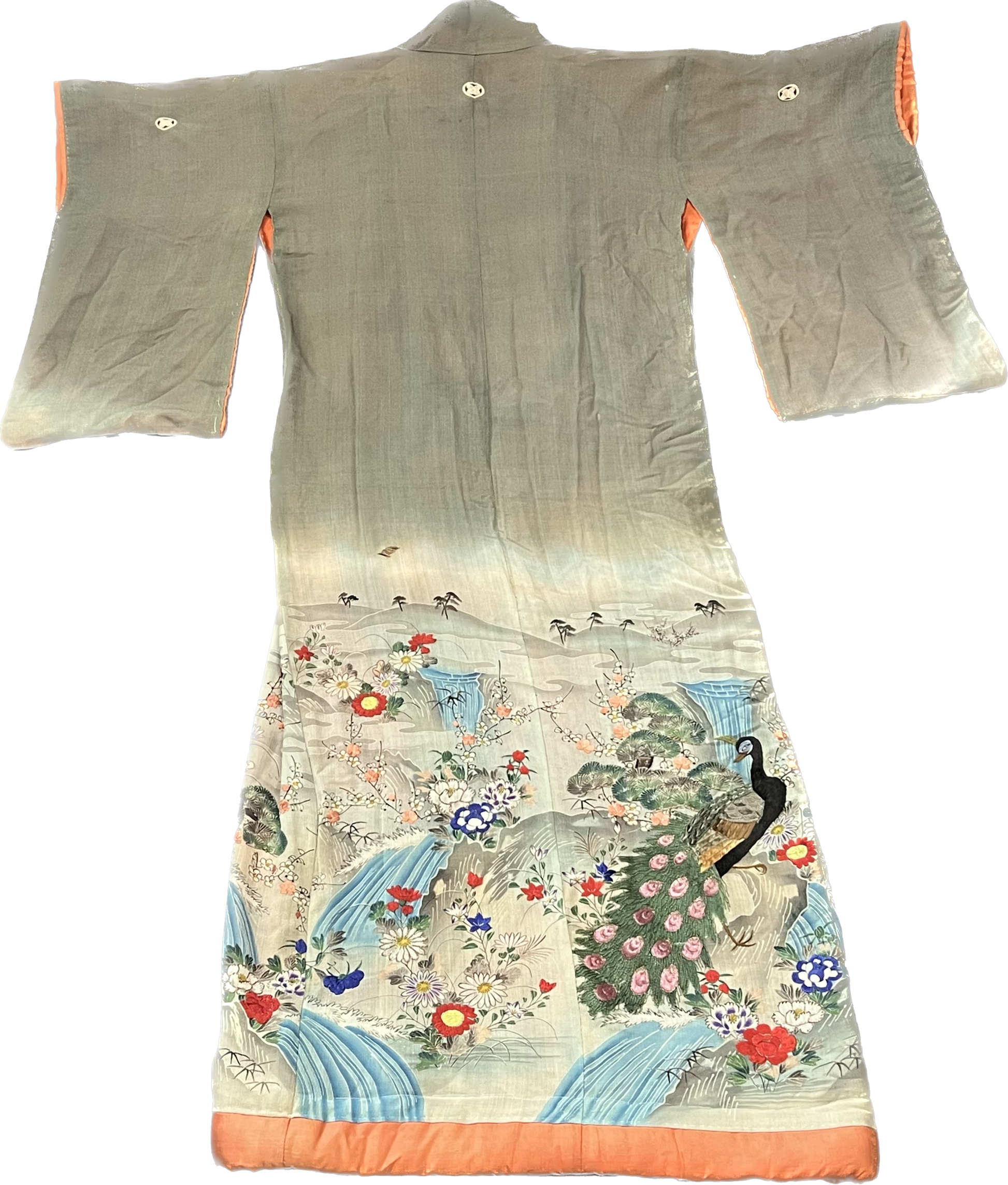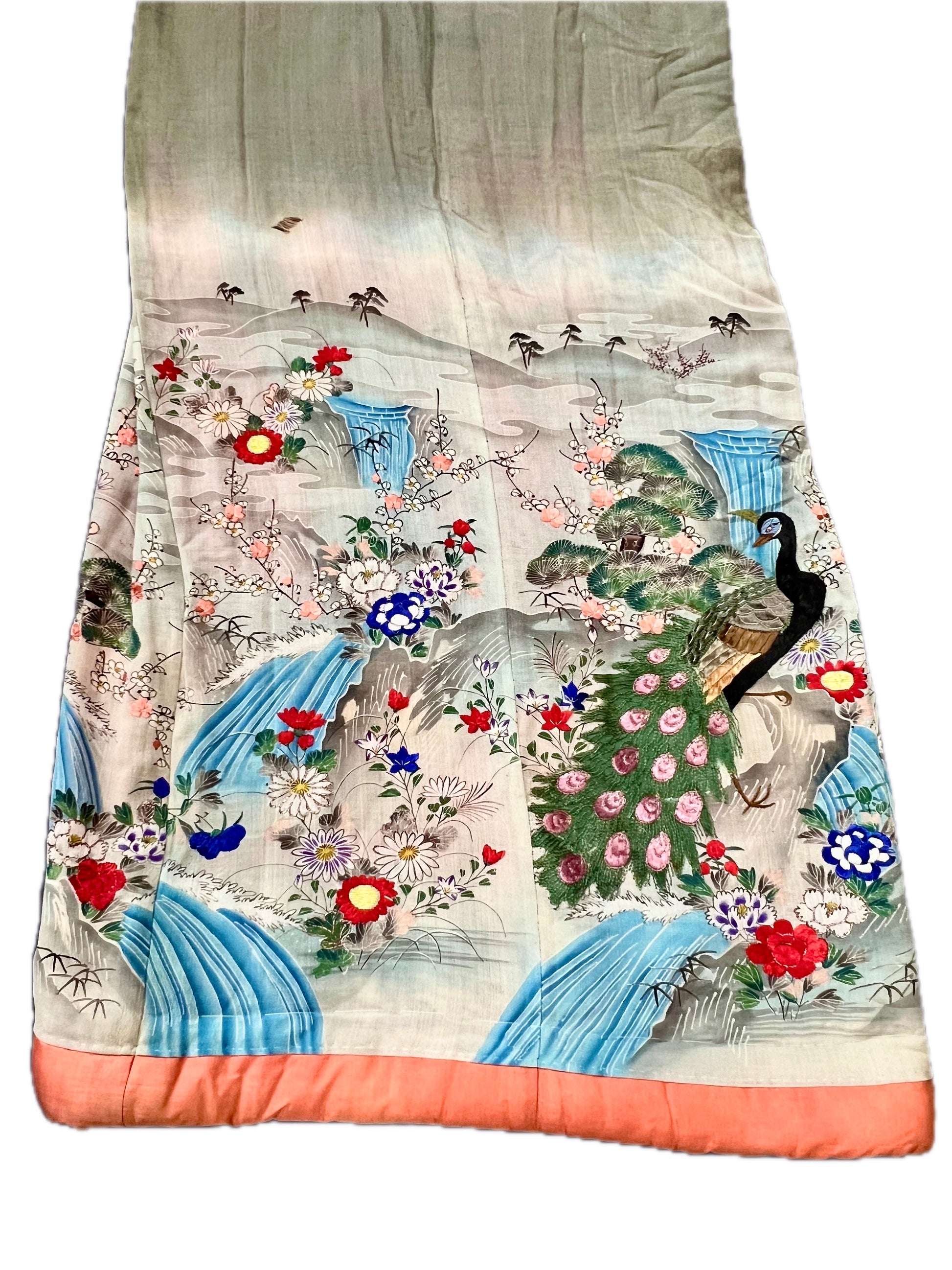cacheantiquessydney
Extraordinary late 19th century chirimen silk crepe kosode style kimono, early to mid Meiji Period
Extraordinary late 19th century chirimen silk crepe kosode style kimono, early to mid Meiji Period
Couldn't load pickup availability
This extraordinary late 19th century chirimen silk crepe kosode style kimono is a lovely example of early Meiji period craftsmanship. The kosode is a predecessor of the kimono dating to the Heian period, and here we seen the shorter sleeves of the kosode with Meiji period details such as a narrower body and padded hem, suggesting this would have been used for formal occasions as an outer layer, similar to the furisode (ceremonial kimono).
Chirimen silk is a traditional Japanese process that requires more raw silk than modern silk production due to the high-twist method and weaving process; when used in combination with dying and hand-painting as we see here, this creates a greater variation of depth and luminosity.
This kimono is cut in the traditional 4 panel style, to better showcase the beautifully worked art across the front and back. The peacock motifs and flower petals are hand-embroidered, while the mountain scenery is delicately hand-painted. This labor-intensive process meant that such kimonos might take up to a year to make.
The body is a highly desirable tissue silk like texture which is found only in the best kimonos of this period. While there are some fragile areas, this kimono still displays beautifully and could be worn with care on a special occasion.
Price marked at $1400 AUD.
Measurements: 152 total length from collar to hem; 120 cm width from sleeve to sleeve.
Good antique condition. Two areas of light shattering; front left collar and back panel. One area of seam separation to interior collar lining.
Shipping & Returns
Shipping & Returns











